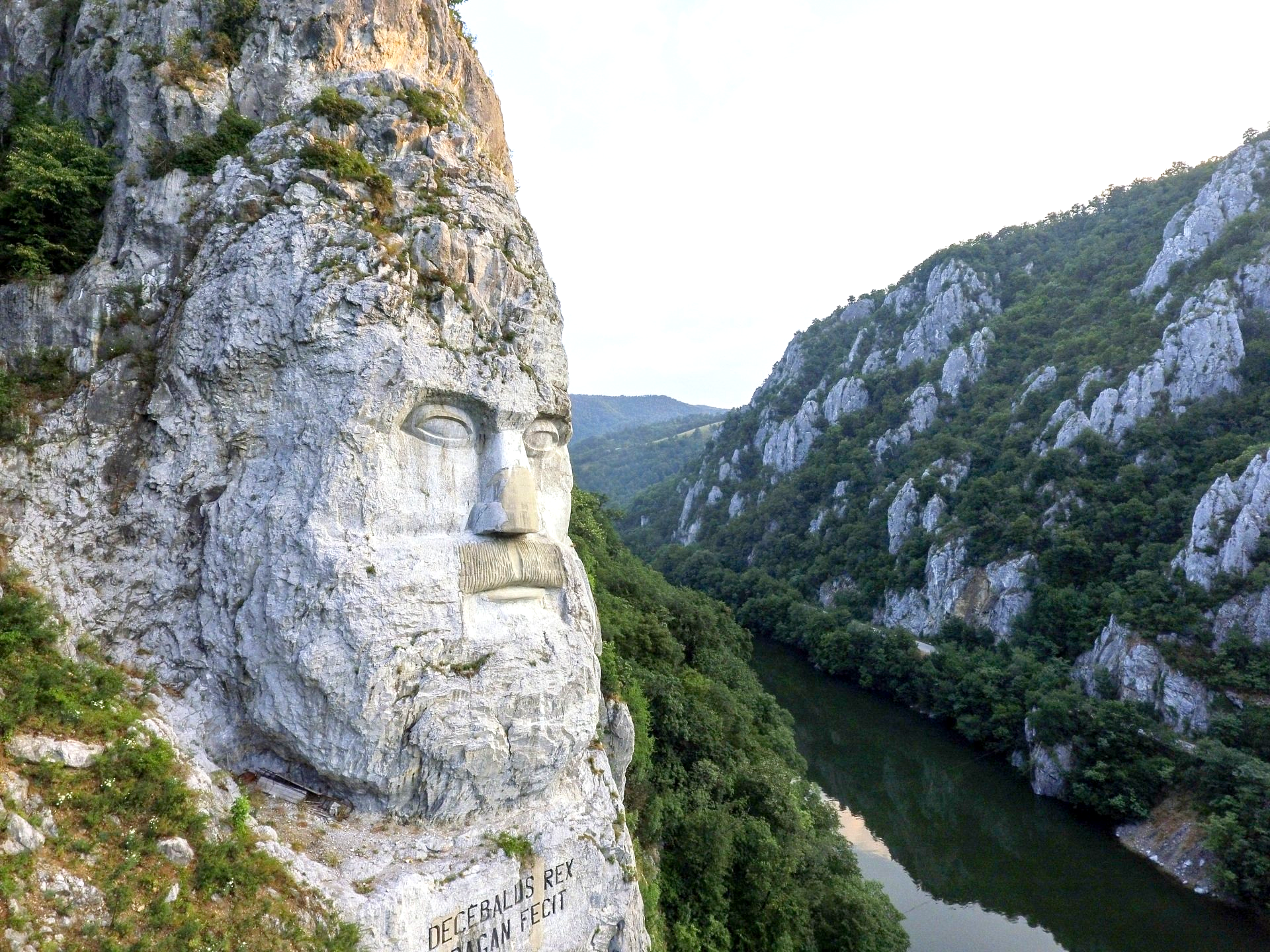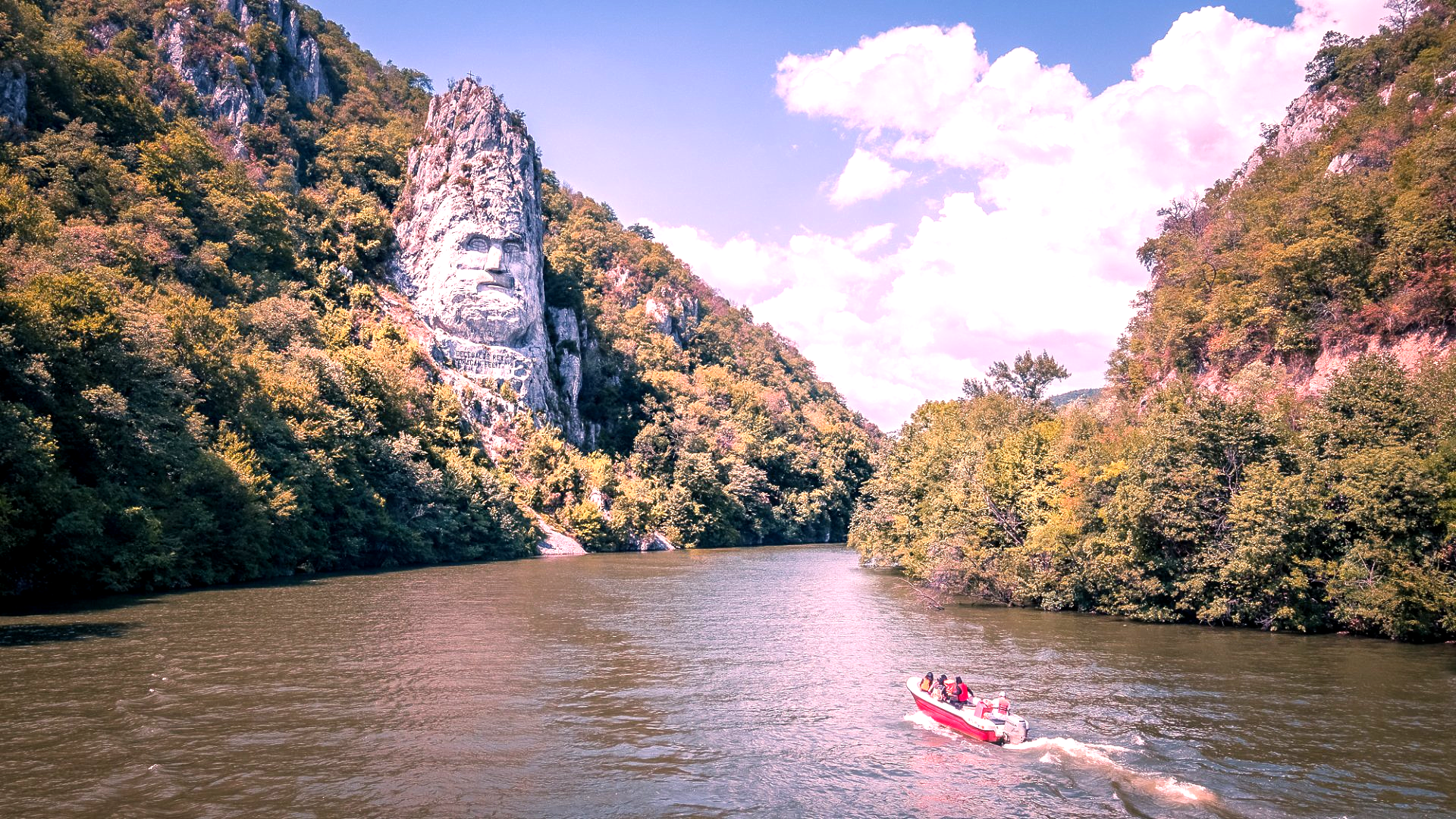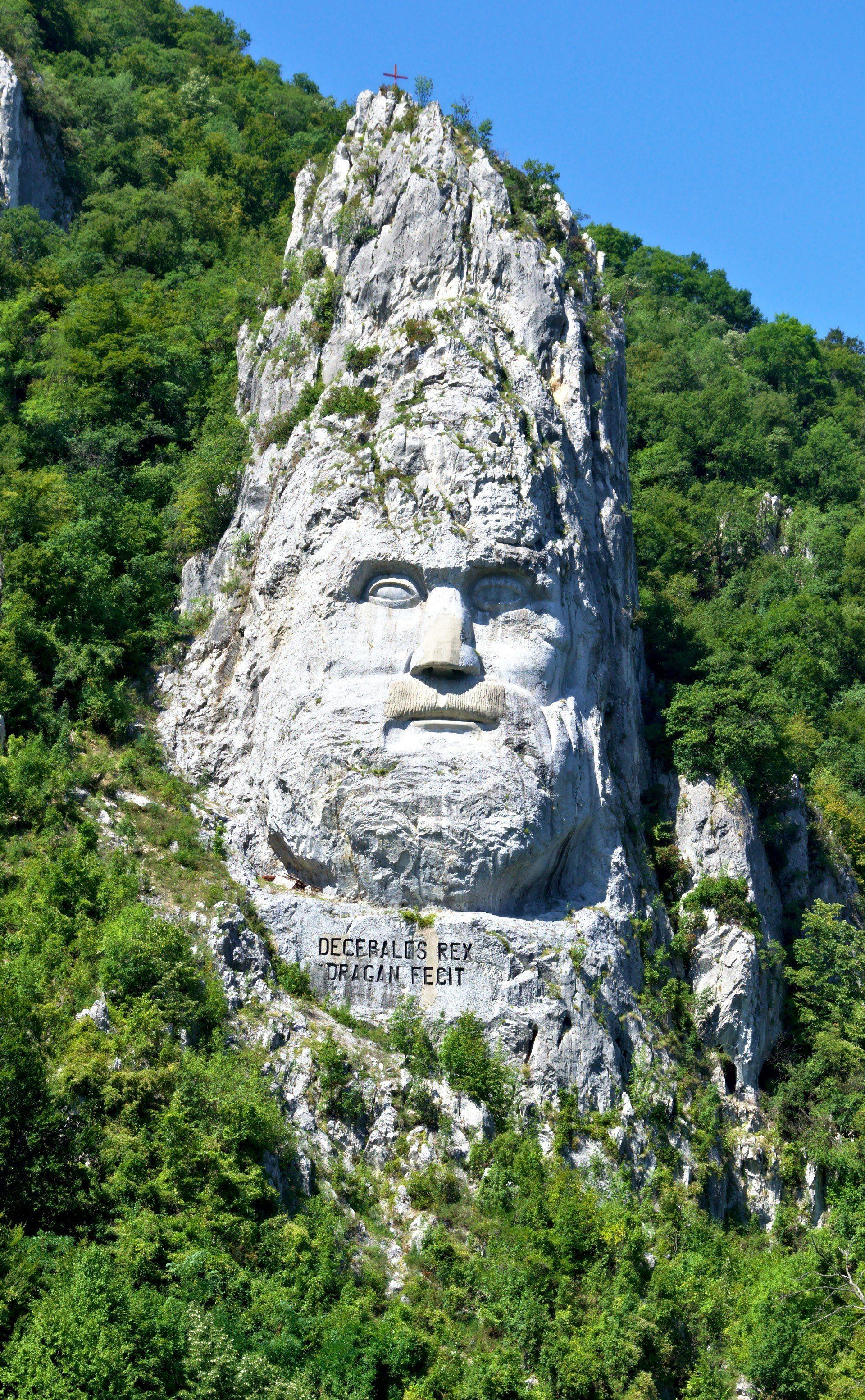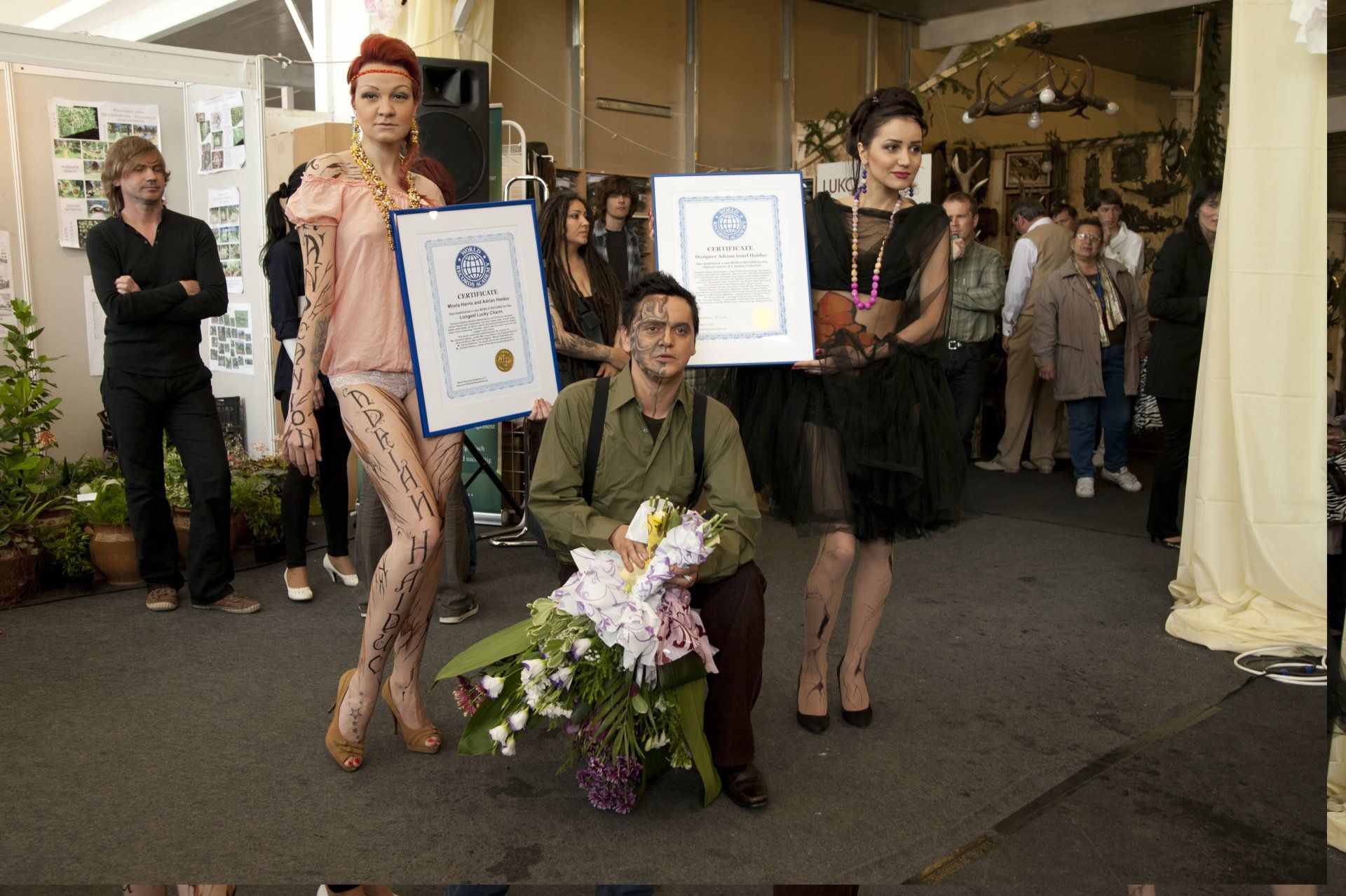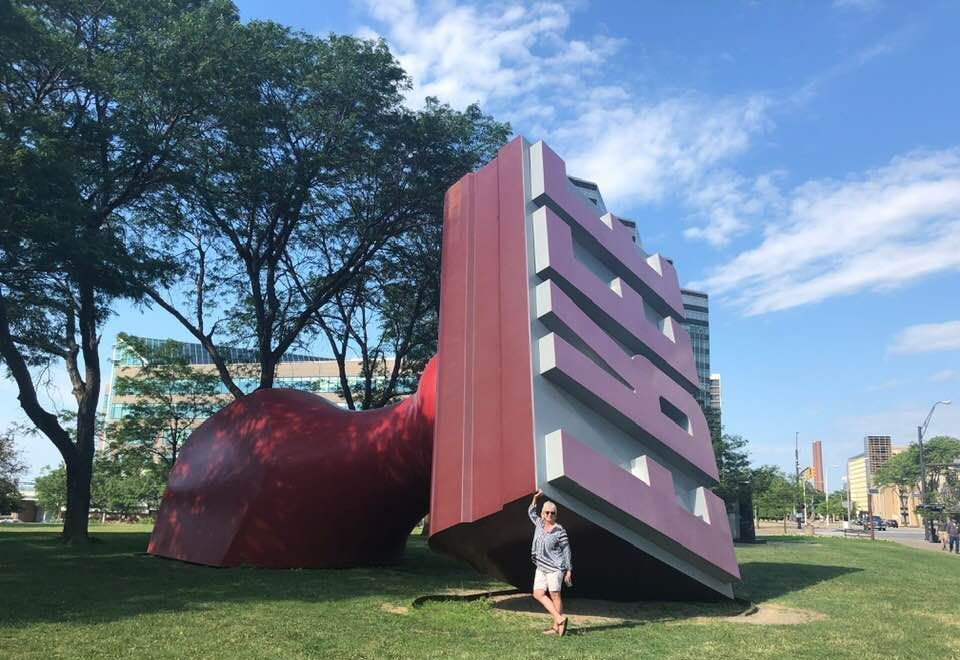Largest rock sculpture on a river bank: The rock sculpture of Decebalus
The World's Largest Rock Sculpture On a River Bank was commissioned by Romanian businessman Iosif Constantin Drăgan and it took 10 years, from 1992 to 2001, for twelve sculptors to finish it.
Iron Gates, ORSOVA,Mehedinți County, Romania--The rock sculpture of Decebalus
is a 42.9 m (141 ft) in height and 31.6 m (104 ft) in width carving in rock of the face of Decebalus
(r. AD 87–106), the last king of Dacia
, who fought against the Roman emperors Domitian
and Trajan
to preserve the independence of his country, which corresponded to modern Romania; it wasmade between 1994 and 2004, on a rocky outcrop on the river Danube, at the Iron Gates, and sets the world record for being the World's Largest rock sculpture on a river's bank
, according to the World Record Academy.
The sculpture was made between 1994 and 2004, on a rocky outcrop on the river Danube
, at the Iron Gates
, which form the border between Romania and Serbia. It is located near the city of Orșova
in Romania.
The carving was placed opposite an ancient memorial plaque, carved in the rock on the Serbian
side of the river facing Romania. The plaque, known as the Tabula Traiana
, records the completion of Trajan's military road along the Danube
and thus commemorates the final defeat of Decebalus by Trajan in 105, and the absorption of the Dacian kingdom into the Roman Empire.
Dimensions
Decebal's face is 55 m high and 25 m wide.
The site of the sculpture is near the town of Orşova, in the cataracts area of the Small Boilers (Mraconia Bay), on the left bank of the Danube, where the depth of the river is greatest : 120 meters.
Some dimensions of the face
:
- eye length: 4.3 meters
- nose length: 7 meters
- nose width: 4 meters.
In comparison with the sculptures made on Mount Rushmore, whose realization lasted for 14 years (1927-1941), for that project working with over 300 alpine sculptors, the image of King Decebal took place for ten years and 12 people worked. upon his achievement.
The execution of this work was carried out under the leadership of the Romanian sculptor Florin Cotarcea
, being realized despite the danger represented by heights, heat and vipers.
On the pontoon in the bay made by the Danube River, where is the largest stone sculpture on a river bank in the world, you can only reach the water by boat. For modeling the rock, over a ton of dynamite was used.
The execution of the work began in the summer of 1994, with the clearing of the trees that afforested the rock. Then he went to cleaning the rocks, the massive rocks that endangered people's lives. No heavy machinery could be used, all working tools being transported by boat and bags of 40-50 kilograms in the back.
From the base of the rock to the scaffold, the climbers-sculptors had to climb for half an hour. We worked in two 6-hour shifts: from 7.30 to 13.30 and from 13.30 to 19.30. The works took place between March and October of each year. An equally difficult and risky operation was to handle the scaffolding.
The working tools used by the sculptors-climbers were the classic ones: the pneumatic hammer, the spigot and the mud. During the summer, the rock warmed up in the sun, making the working conditions almost unbearable.
"By modeling this figure in the mountain, Iosif Constantin Drăgan wanted to commemorate, but also to demonstrate the contribution of Romanians to the formation of European cultures, starting from the premise that the cultural identity of Romanians can be defined first and foremost by its Daco-Thracian composition," the unitischimbam.roreports.
Nick Thorpe in The Danube: A Journey Upriver from the Black Sea to the Black Forest writes,
"Upstream from the church, the bulbous features of Decebal, moustachioed and wide-eyed, have been carved into the rock face, forty meters high and twenty five wide. The ancient Dacian leader stares across the river at the opposite cliff...The cliff, rising above his head into the wooded slope, provides him with the illusion of a large forehead or a pointed wizard's hat."
